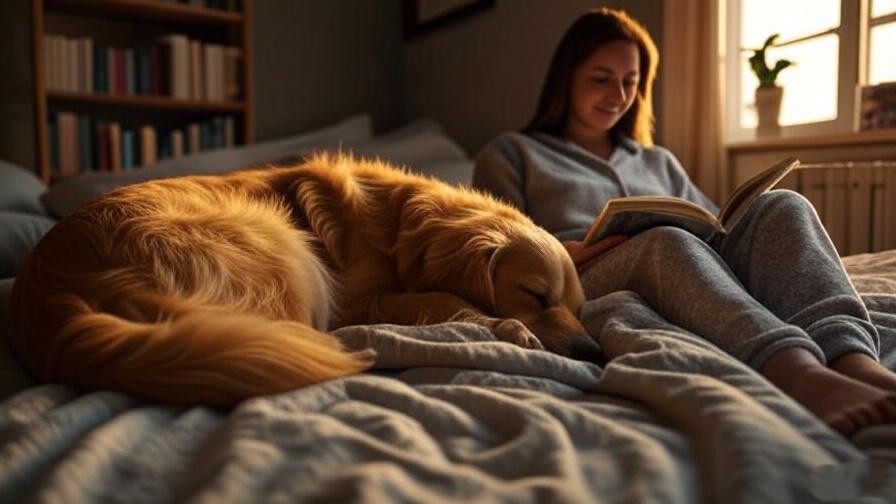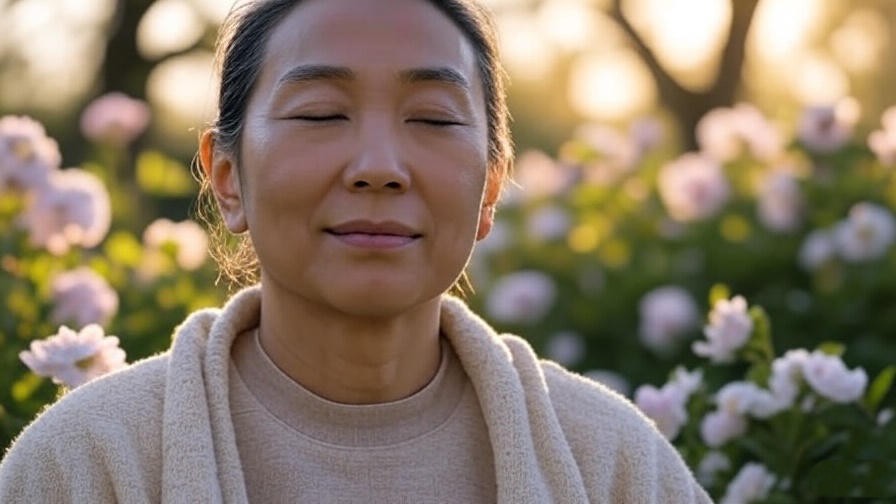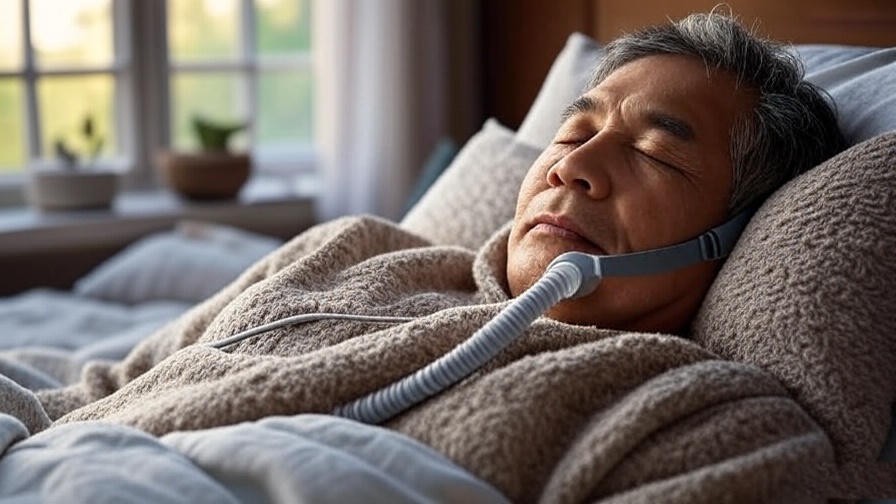Picture this: you wake up in the middle of the night, cozy in bed, only to find your furry best friend curled up nearby—with their bum pointed directly at you. It’s a quirky, sometimes amusing sight that leaves many pet owners wondering, why do dogs sleep with their bum facing you? This peculiar canine habit isn’t just a random quirk; it’s a window into your dog’s instincts, emotions, and trust in you. Understanding this behavior can deepen your bond with your pet, aligning perfectly with the pursuit of holistic well-being for both you and your dog. In this comprehensive guide, we’ll explore the science, instincts, and emotional connections behind this common sleeping position, offering expert-backed insights and practical tips to enhance your dog’s sleep and strengthen your relationship.
Understanding Canine Sleep Behavior
Why Sleep Matters for Dogs
Sleep is as vital for dogs as it is for humans, playing a critical role in their physical health, mental clarity, and emotional balance. Just like us, dogs experience REM (Rapid Eye Movement) sleep, where dreaming occurs, helping process daily experiences and maintain cognitive function. According to a 2017 study published in Scientific Reports, dogs average 13–16 hours of sleep daily, depending on their age, breed, and activity level. Puppies and senior dogs often need more rest to support growth or manage aging, while active adult dogs recharge through sleep to stay energetic and alert.
Poor sleep can lead to irritability, reduced immunity, and even behavioral issues in dogs, much like sleep deprivation affects humans. For pet owners, understanding canine sleep patterns fosters empathy and informs better care practices, creating a nurturing environment that supports your dog’s overall well-being—a cornerstone of holistic pet care.
Common Dog Sleeping Positions and Their Meanings
Dogs sleep in a variety of positions, each offering clues about their comfort, security, and personality. Common postures include:
- Curled Up (The Donut): Dogs tuck their legs and tail, conserving heat and protecting vital organs, often signaling a need for security.
- Sprawled Out (The Superman): Lying flat on their belly, this position is common in playful or hot dogs cooling off.
- Belly Up: Exposing their stomach shows ultimate trust and relaxation, as it’s a vulnerable position.
- Bum-Facing: Sleeping with their rear toward you, this position is surprisingly common and often misunderstood.
The bum-facing position, in particular, sparks curiosity because it seems less affectionate than snuggling face-to-face. Yet, as we’ll explore, this behavior is deeply rooted in instinct, trust, and comfort, making it a fascinating lens into your dog’s psyche.
Why Do Dogs Sleep with Their Bum Facing You? The Top Reasons
Instinctual Behavior from Their Ancestors
The bum-facing sleeping position has roots in canine evolution. In the wild, wolves and other ancestral canines slept in packs, often positioning themselves to protect vulnerable areas like their face and belly. By facing their rear outward, they could guard against potential threats while keeping their pack mates in view. According to Dr. Stanley Coren, a renowned canine behaviorist, this instinct persists in domestic dogs, even in the safety of your home.
When your dog sleeps with their bum facing you, they’re likely channeling this ancestral behavior, positioning themselves to feel secure while keeping you—a trusted pack member—in their safe zone. This instinctual habit highlights how deeply wired canine sleep behaviors are, connecting your modern pup to their wild roots.
A Sign of Trust and Comfort
Far from being a snub, a dog sleeping with their bum facing you is a profound sign of trust. Dogs are vulnerable when they sleep, so choosing a position that exposes their back end while facing away suggests they feel safe in your presence. “When a dog turns their back to you during sleep, it’s a compliment,” says Dr. Karen Becker, a holistic veterinarian. “They’re saying, ‘I trust you to watch my back.’”
This trust is a cornerstone of the human-dog bond, reflecting a sense of security that strengthens your emotional connection. It’s a subtle reminder that your dog sees you as a protector, aligning with the principles of holistic well-being that emphasize mutual trust and emotional harmony.
Temperature Regulation and Comfort
Practicality also plays a role in this sleeping position. Dogs regulate their body temperature through their extremities, including their rear. By facing their bum toward you, they might be positioning themselves to stay cool (especially in warmer climates) or cozy up to a heat source (like your body) in colder settings. Breeds with short coats, like Boxers or Dalmatians, may use this position to conserve warmth, while fluffy breeds like Huskies might do it to cool off.
The position also allows dogs to maximize physical comfort, aligning their body in a way that feels natural and secure. For example, a dog might press their back against you to feel your presence without overheating, balancing comfort and connection.
Marking Territory with Scent
Dogs communicate through scent, and their anal glands, located near the tail, play a key role in this process. When your dog sleeps with their bum facing you, they may be subtly marking their space with their unique scent, reinforcing their presence in a safe, familiar environment. According to the American Kennel Club, this behavior is a natural way for dogs to establish their territory without aggression.
This subtle scent-marking isn’t about dominance but rather a way to feel at home. It’s a sign that your dog considers your shared space a safe haven, tying into the broader theme of creating a nurturing environment for holistic well-being.
What Your Dog’s Sleeping Position Says About Your Relationship
Signs of a Strong Bond
The bum-facing position is a testament to a strong human-dog bond. When your dog chooses this posture, it’s a sign they feel secure enough to let their guard down. Other behaviors that complement this include following you around the house, leaning against you, or seeking you out during stressful moments like thunderstorms. These actions collectively indicate a deep emotional connection, where your dog sees you as a source of safety and comfort.
For example, Sarah, a dog trainer with 10 years of experience, shares: “My Labrador, Max, always sleeps with his bum toward me. It took me a while to realize it’s his way of saying he trusts me completely. Now, I see it as a badge of honor.” Such anecdotes resonate with pet owners, reinforcing the emotional significance of this behavior.
When to Be Concerned
While the bum-facing position is typically positive, sudden changes in your dog’s sleeping habits could signal underlying issues. For instance, if your dog suddenly avoids sleeping near you or shifts to a more defensive posture (like curling tightly into a ball), it might indicate stress, anxiety, or health problems. Common red flags include:
- Restlessness: Frequent repositioning or pacing at night.
- Aggression or Withdrawal: Unusual irritability or avoidance of contact.
- Physical Symptoms: Excessive scratching, limping, or changes in appetite.
If you notice these signs, consult a veterinarian to rule out medical issues like pain or allergies. Monitoring your dog’s overall behavior provides a holistic view of their well-being, ensuring you address any concerns promptly.
How to Support Your Dog’s Sleep for Better Well-Being
Creating a Comfortable Sleep Environment
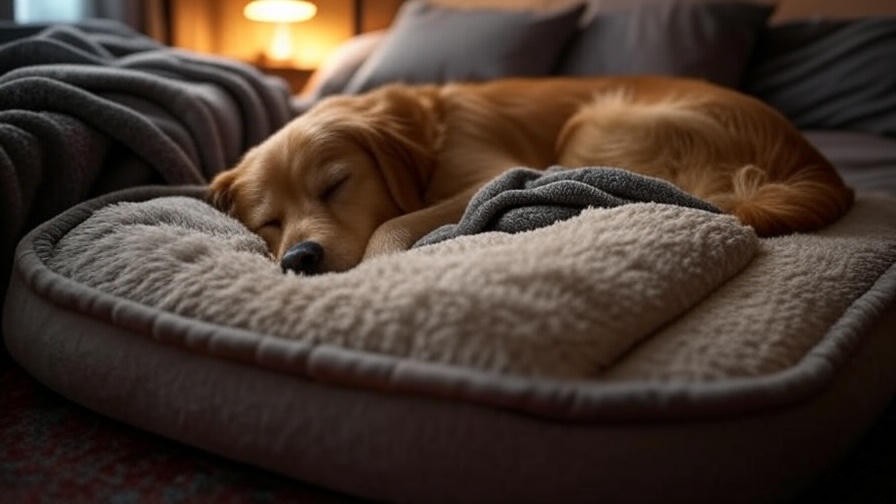
A restful sleep environment is crucial for your dog’s health and happiness. Here’s how to optimize their sleeping space:
- Choose the Right Bed: Select a bed that matches your dog’s size and sleeping style. Orthopedic beds are ideal for senior dogs, while cooling mats suit breeds prone to overheating.
- Control Room Temperature: Keep the sleeping area between 60–75°F, adjusting for your dog’s coat type.
- Minimize Noise and Light: Use blackout curtains or white noise machines to create a calm atmosphere.
- Add Familiar Items: Place a favorite blanket or toy in their bed to enhance comfort.
Creating a consistent sleep routine—such as a fixed bedtime and calming pre-sleep activities—further supports healthy sleep patterns, aligning with holistic well-being principles.
Strengthening Your Bond Through Sleep
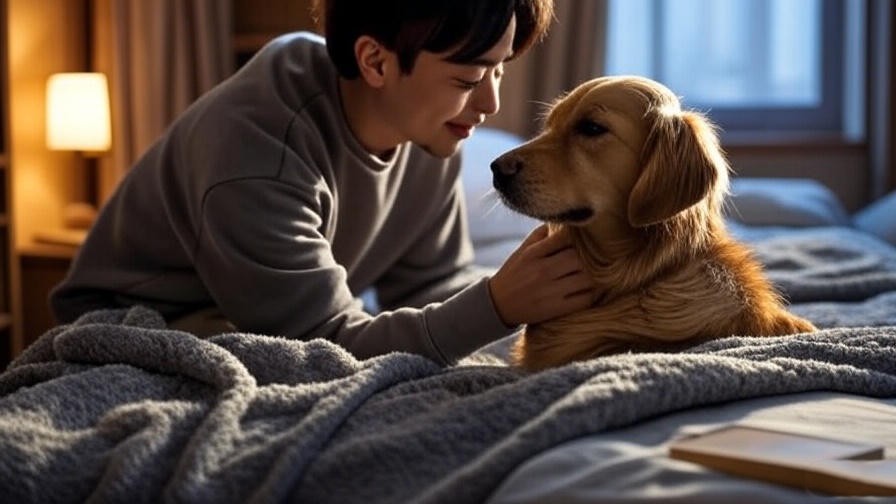
Building trust through sleep-focused bonding activities can deepen your connection with your dog. Try these expert-backed strategies:
- Calming Bedtime Routine: Engage in gentle petting or a short walk before bed to signal relaxation.
- Mindful Observation: Spend a few minutes each night observing your dog’s sleep habits to understand their preferences.
- Positive Reinforcement: Reward your dog with treats or praise for settling into their bed calmly.
For instance, Emily, a pet owner, transformed her anxious rescue dog’s sleep habits by introducing a nightly routine of soft music and gentle massages. Within weeks, her dog began sleeping closer, often with their bum facing her as a sign of trust. Such practices foster emotional harmony, benefiting both you and your pet.
Addressing Sleep-Related Behavioral Issues
If your dog struggles with nighttime restlessness or anxiety, consider these solutions:
- Positive Reinforcement Training: Reward calm behavior to encourage relaxation at bedtime.
- Calming Aids: Use vet-approved supplements like melatonin or pheromone diffusers to reduce anxiety.
- Exercise: Ensure your dog gets enough physical and mental stimulation during the day to promote restful sleep.
| Issue | Symptoms | Solution |
|---|---|---|
| Nighttime Restlessness | Pacing, whining, inability to settle | Increase daytime exercise, calming routine |
| Separation Anxiety | Clinginess, destructive behavior | Pheromone diffusers, crate training |
| Pain or Discomfort | Reluctance to lie down, whimpering | Veterinary checkup, orthopedic bed |
Addressing these issues proactively enhances your dog’s sleep quality, supporting their overall well-being.
The Science Behind Canine Sleep and Behavior
What Research Says About Dog Sleep

Scientific research into canine sleep provides fascinating insights into why dogs behave the way they do, including their preference for sleeping with their bum facing you. A 2020 study published in Frontiers in Veterinary Science found that dogs, like humans, experience distinct sleep cycles, including REM and non-REM phases, which are essential for memory consolidation and emotional regulation. During REM sleep, dogs may dream, often twitching or vocalizing as they process their day’s experiences. This sleep architecture underscores why a restful environment is critical for your dog’s mental and physical health.
Moreover, research from the University of British Columbia indicates that dogs with consistent sleep routines exhibit lower stress levels and better behavioral outcomes. Understanding these patterns helps pet owners make informed decisions, such as providing a quiet sleep space or maintaining a regular bedtime. By aligning your dog’s sleep habits with their biological needs, you enhance their well-being, which ties directly into the holistic care principles of nurturing both body and mind.
The Role of Breed and Personality
A dog’s breed and personality significantly influence their sleeping positions, including the bum-facing habit. Breeds with strong guarding instincts, like German Shepherds or Rottweilers, may naturally adopt this position to maintain a defensive posture, even in a safe home environment. Conversely, more relaxed breeds, such as Labradors or Golden Retrievers, might choose this position simply for comfort or to stay close to their owner.

Personality also plays a role. Confident dogs may sleep with their bum facing you as a casual sign of trust, while anxious dogs might use this position to feel secure while keeping an eye on their surroundings. Dr. Alexandra Horowitz, author of Inside of a Dog, notes, “A dog’s sleeping position is a blend of instinct and individuality, reflecting both their evolutionary wiring and their unique bond with you.” By observing your dog’s breed-specific traits and personality, you can better interpret their sleep behavior and tailor their environment to their needs.
FAQs About Dogs Sleeping with Their Bum Facing You
Is it normal for my dog to always sleep with their bum facing me?
Yes, it’s perfectly normal for many dogs to sleep with their bum facing you, as it often reflects trust, instinct, or comfort. This position allows them to feel secure while keeping their vulnerable areas protected. However, if this behavior is new or accompanied by signs of distress (e.g., whining, restlessness), monitor your dog for other behavioral changes and consult a veterinarian to rule out underlying issues.
Could this position mean my dog is uncomfortable or unhappy?
In most cases, the bum-facing position is a positive sign of trust and relaxation. However, if your dog seems tense, avoids interaction, or shows other signs of discomfort (e.g., tucking their tail tightly or sleeping far away), it could indicate stress, anxiety, or health concerns. Check for environmental changes (e.g., loud noises, new pets) or physical symptoms, and seek veterinary advice if the behavior persists.
How can I encourage my dog to sleep closer to me?
To encourage closer sleeping habits, focus on building trust and creating a comforting environment:
- Build Trust: Spend quality time with your dog through play, training, or gentle petting to strengthen your bond.
- Optimize Their Bed: Place their bed near yours or add a blanket with your scent to make the space inviting.
- Use Positive Reinforcement: Reward your dog with treats or praise when they settle close to you.
Gradual changes and patience are key, especially for rescue dogs or those with anxious tendencies.
Does this behavior change with age?
Yes, a dog’s sleeping habits can evolve with age. Puppies may sleep closer to you for warmth and security, often adopting the bum-facing position instinctively. Adult dogs might continue this habit as a sign of trust, while senior dogs may adjust their sleeping positions due to arthritis, reduced mobility, or a greater need for comfort. For example, older dogs might prefer softer beds or warmer spots, influencing their choice to face their bum toward you for coziness. Regular veterinary checkups ensure age-related changes are addressed promptly.
Conclusion
When your dog sleeps with their bum facing you, it’s more than a quirky habit—it’s a window into their instincts, trust, and comfort. This behavior, rooted in their ancestral pack dynamics, reflects a deep sense of security and connection with you, their trusted human. From evolutionary instincts to scent communication and temperature regulation, the reasons behind this sleeping position highlight the complex interplay of biology and emotion in your dog’s world. By understanding and supporting their sleep habits, you can foster a stronger bond, enhance their well-being, and create a nurturing environment that aligns with holistic care principles.
Take a moment to observe your dog’s sleeping habits tonight. Try implementing the tips shared here, such as creating a cozy sleep space or establishing a calming bedtime routine, to deepen your connection. Does your dog sleep with their bum facing you? Share your story in the comments below—we’d love to hear how this quirky behavior strengthens your bond!

